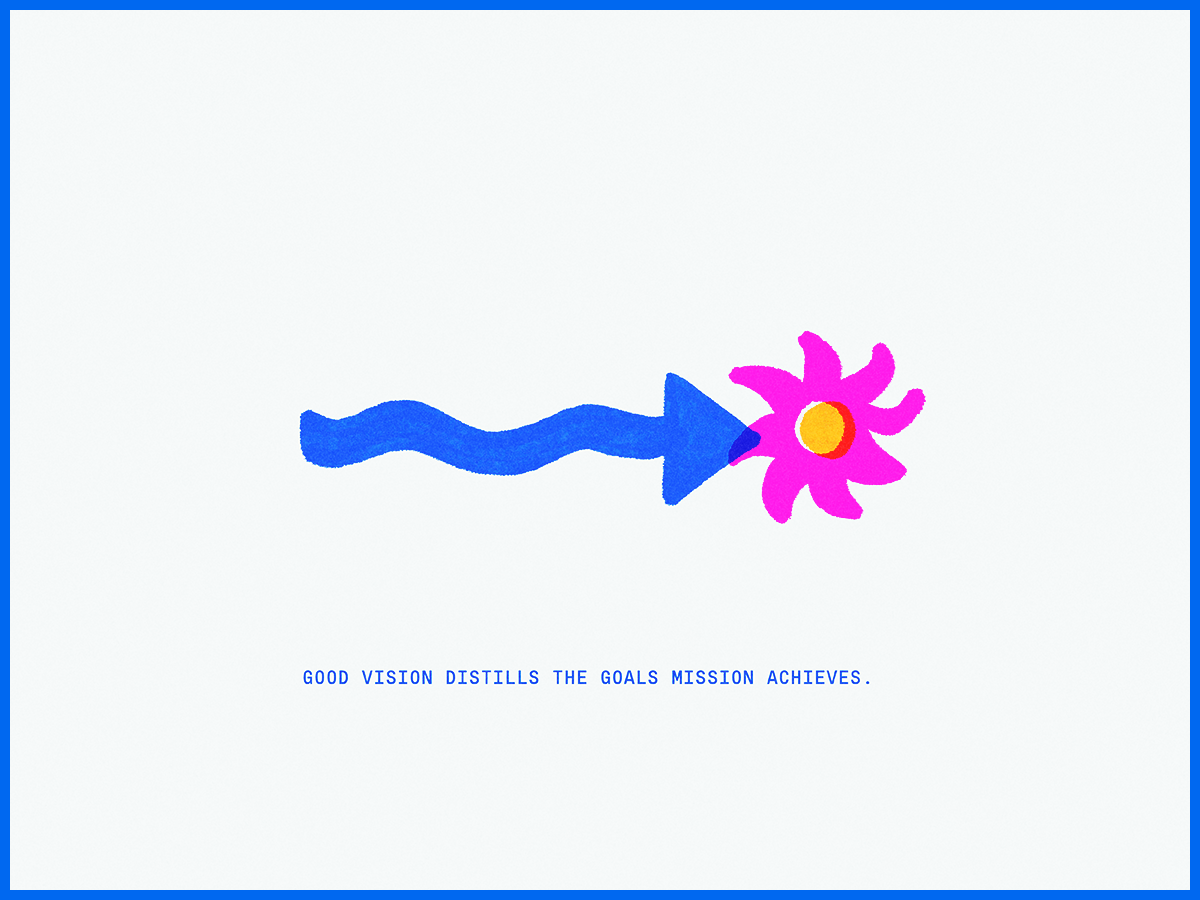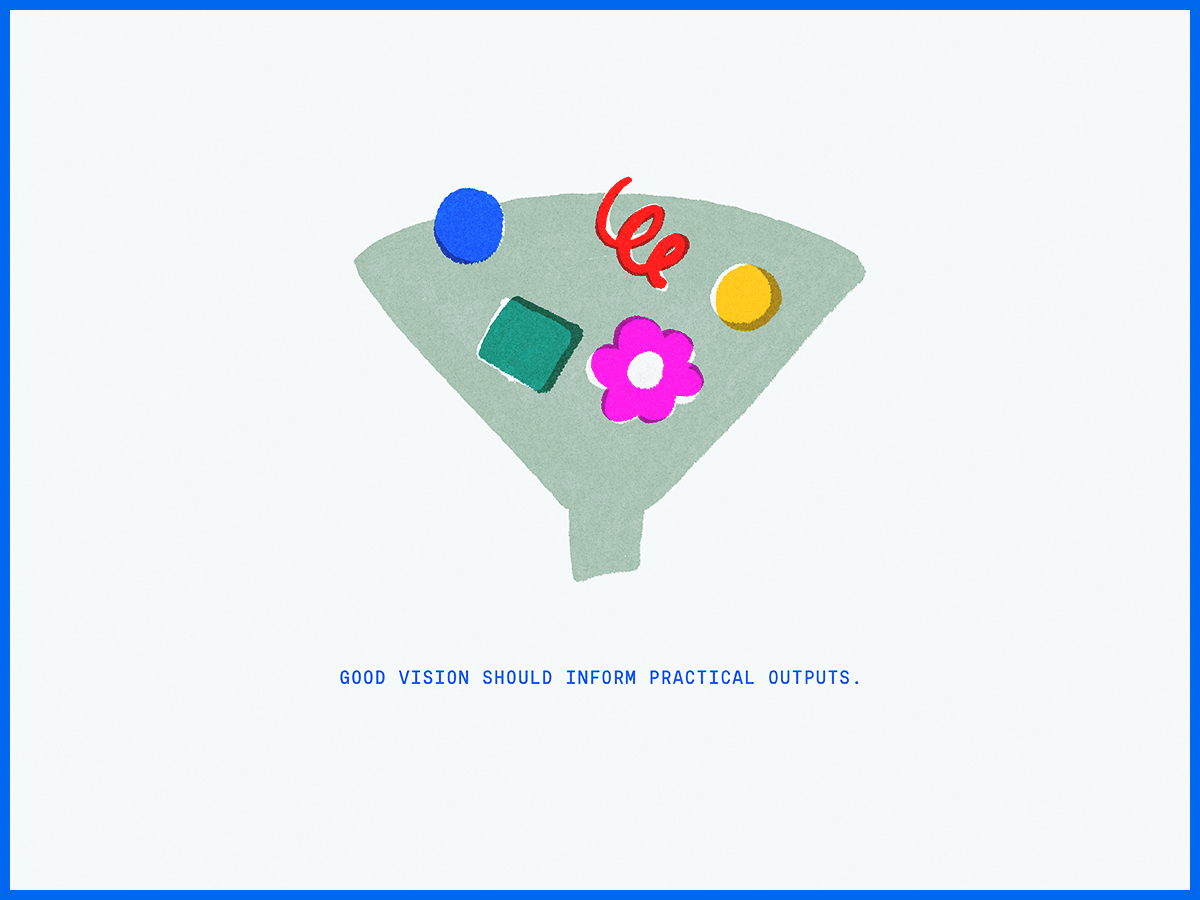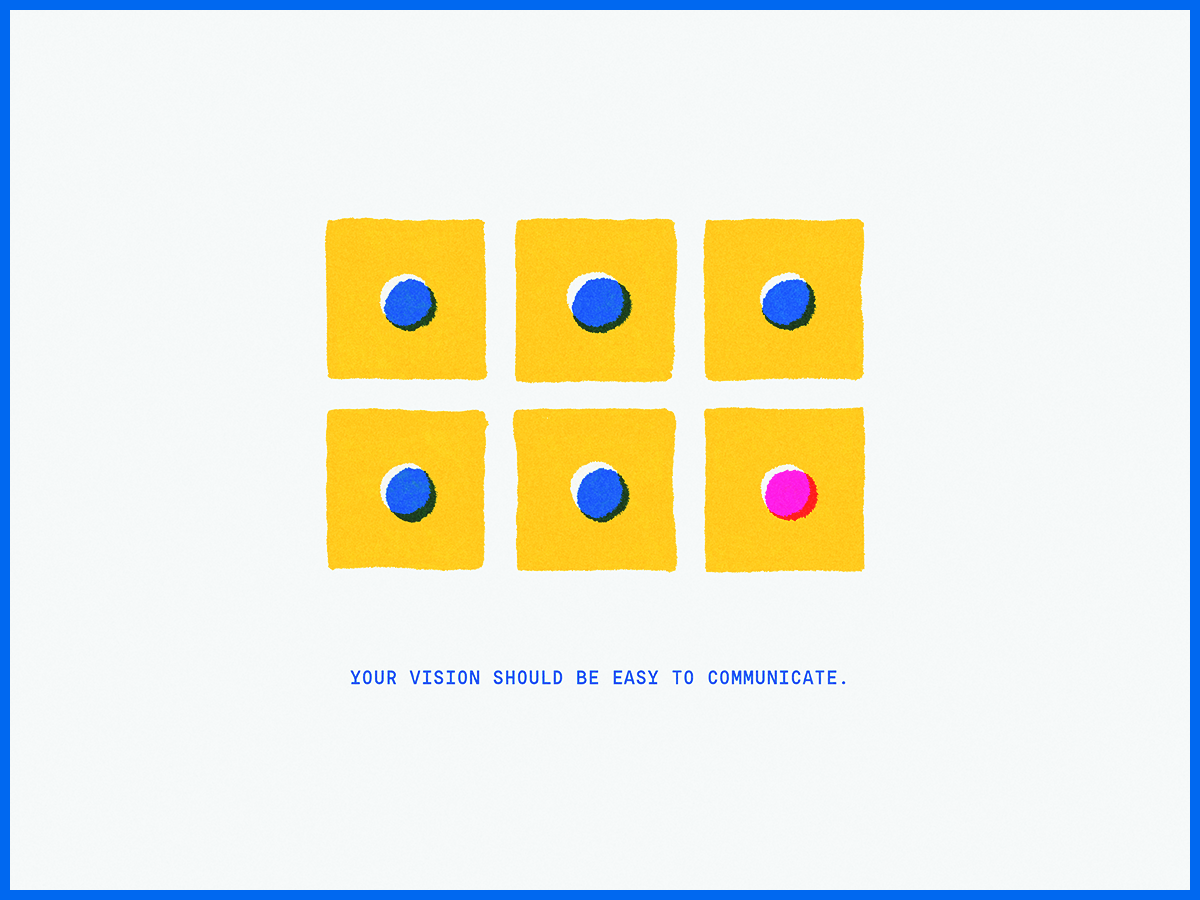
6 Questions to Diagnose an Organization’s Vision Statement
“Because a vision statement puts written words to the direction that your organization is heading, it’s more tangible than the mission statement.”
Amelia Gray
At Amenable, the month of July is all about vision. Typically, we write and teach about branding, communications, and organizational health for churches, nonprofits, and small businesses. But as many of our partners and clients take July to look forward to a new fiscal year or new school year, we figured it was a great time to get back to the basics with a blog series on vision. We’ll talk about what vision is, how to set clear direction, and how to write a good vision statement—just to name a few. So today, we’re asking six questions to diagnose an organization’s vision statement.
But before we jump in, let’s clarify—
What’s the Difference Between an Organization’s Vision Statement and Mission Statement?
While both statements are a written expression of what you’re all about, the difference lies in the perspective. While a mission statement explains what a company already does, an organization’s vision statement explains where it is going. Take ours, for example.
Vision: To be the best creative team for our clients so they can build a better world by engaging and impacting their communities.
Mission: We empower mission-driven people to cultivate trust and communicate honestly through kind and creative brands.
In our case, our vision statement looks forward to who we want to be for our clients and our mission statement puts action behind that, reminding us of what we’re doing every day to get there.
A Note on Casting Vision
While having a vision statement can feel like something that applies only to large corporations, having a clear and strategic direction is the key to any thriving organization, large or small. For many church, nonprofit, and small business leaders, it’s easy to get caught up in the day-to-day operations of running an organization rather than the good work you set out to do. If you haven’t yet spent much time setting that direction—or if you’re wondering when and how to change it—check out our free resource on casting vision.
Because a vision statement puts written words to the direction that your organization is heading, it’s more tangible than the mission statement. With that in mind, the questions below are meant to specifically guide you through evaluating an organization’s vision statement.
6 Questions to Diagnose an Organization’s Vision Statement

1. Is our vision statement connected to our specific mission?
As we mentioned above, your mission and your vision answer different questions. Therefore, while the two should be distinct, there’s an inherent connectedness. If your vision doesn’t echo your mission, simply put, where your organization is headed and what you are doing to get there don’t line up. Testing your vision through your mission is helpful because it brings a specificity and relevance to your long-term goals. You might dream of planting new churches, opening new sites all around your city, or expanding your retail, but an organization’s vision statement should distill the most important goals that the mission can feasibly achieve.
P.S. Here’s another way to frame this question—if our vision statement was swapped with a competitors’, would anyone notice?

2. Is our vision statement broad enough to weather short-term shifts in strategy?
While you need the relevance of a vision tethered to your mission, you also need one that can encompass your daily operations and short-term shifts in strategy. A guide on How to Write a Vision Statement from Asana put it this way, “A vision statement connects your company mission to your goals, but it isn’t a goal in and of itself.”
Your vision statement should be broad enough to remain clear even when your strategy pivots. When too specific, it’s likely that your current vision should serve as a goal, but not represent the single direction that your organization is heading.

3. Is our vision statement used to filter real-life decisions?
Put another way, what difference does it make? If an organization’s vision statement isn’t making a tangible difference in the everyday decisions that are made—whether big or small—it might be time to re-evaluate. Without a practical vision, it’s easy to get caught in the weeds of daily operations. When was the last time you said “no?” A quick “yes” can seem harmless—it’s just one email, one meeting, one direction, one new idea—but the impact of doing a few relevant things well can outweigh that of doing a lot of good things while spread too thin.

4. Can everyone in our organization clearly communicate our vision statement in their own words or context?
One practical way to evaluate where your church, nonprofit, or small business is headed, is to ask people involved in the work you do—leadership, staff, donors, volunteers, participants, and customers are a great place to start. While a diverse team or audience will naturally articulate your mission and vision in unique ways, if there is no clear theme that aligns with a written vision statement, it’s worth considering how to align your strategy with your people. Do you need to set a clearer direction? Does the clear direction you’ve already set struggle to adapt or connect with different team members’ roles or experiences?

5. Do we have any competing visions? (Can you imagine doing anything else?)
In one sense, “yes” isn’t a bad answer. If you’re having a difficult time making a business decision, it’s likely that you have more than one good opportunity. But, when new opportunities that are less relevant to your mission and vision start to take priority, you might have a problem on your hands.
It’s similar to a marketing concept called “cannibalization.” Oftentimes, a company that sells a great product will expand their offerings, but end up becoming their own competitors in the process. Coca-Cola famously ran into this issue with Diet Coke and Coke Zero. Unfortunately, the company solved the same core problem—customers wanted a cola without the sugar—twice, which ended up hurting their sales in the big picture.
When new opportunities begin to distract you and your team from the good work you set out to do, it might be time to re-prioritize. Not all good things are the right things for you—especially when it comes to setting a clear vision.

6. Does our vision still challenge us?
A modest vision might be the result of leaning too heavily on your mission (what you already do) to inform your vision (where you’re going). Don’t get us wrong—reaching your goals is cause to celebrate, but it’s also encouragement to press on. If you’re no longer challenged by the direction you’ve set, it might be time for something bigger, deeper, or just a little different.
When evaluating an organization’s vision statement, the essential goal is to align vision and work. In your own context, it may mean that the work you choose to do on a daily basis should get back to your “why.” On the other hand, it’s possible for your “why” to change as you learn how to meet new customer needs or to serve your community in fresh ways. Whatever the case, we’re here to partner with you—or just cheer you on. Want to talk more about vision? Drop us a line and let’s chat!
